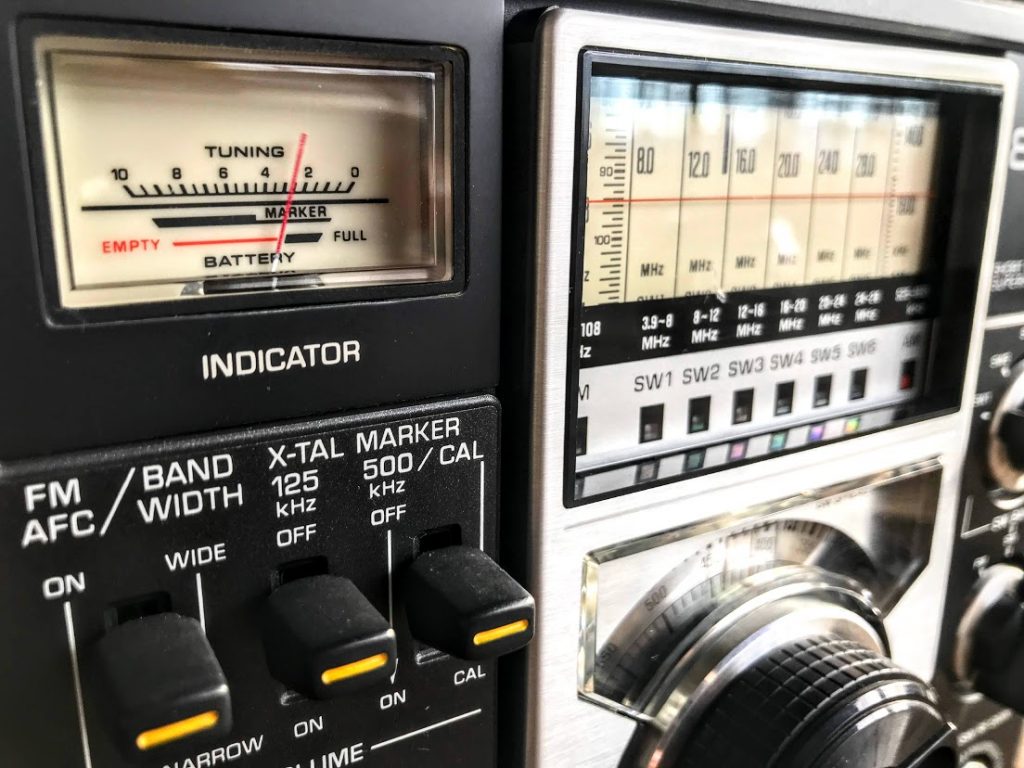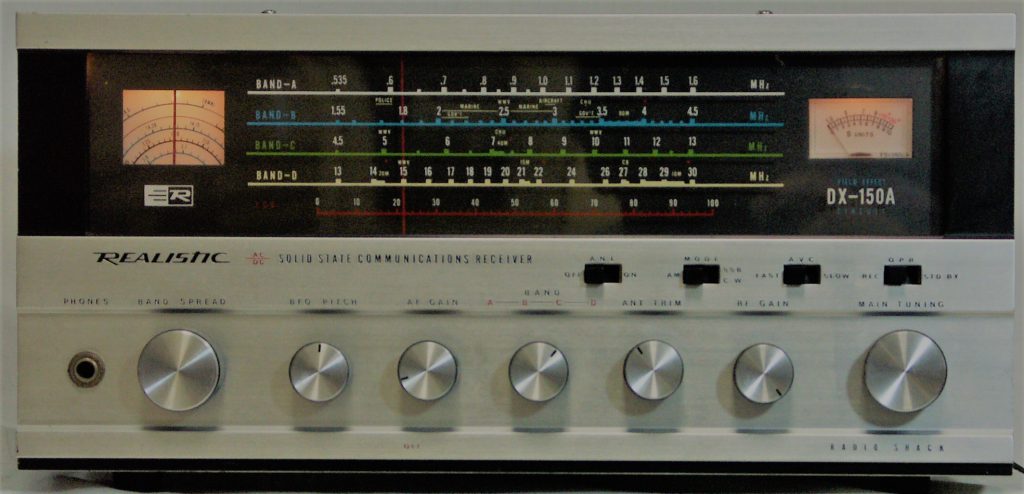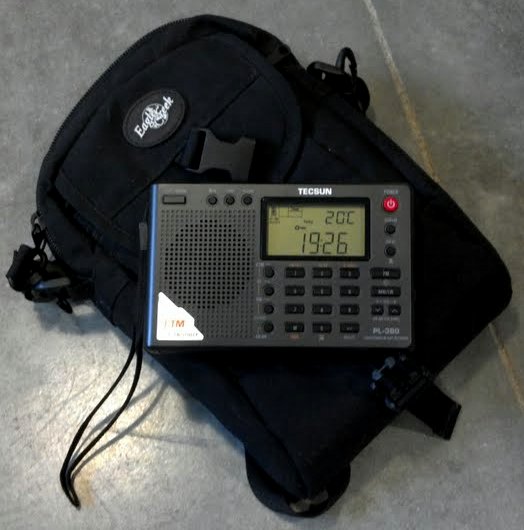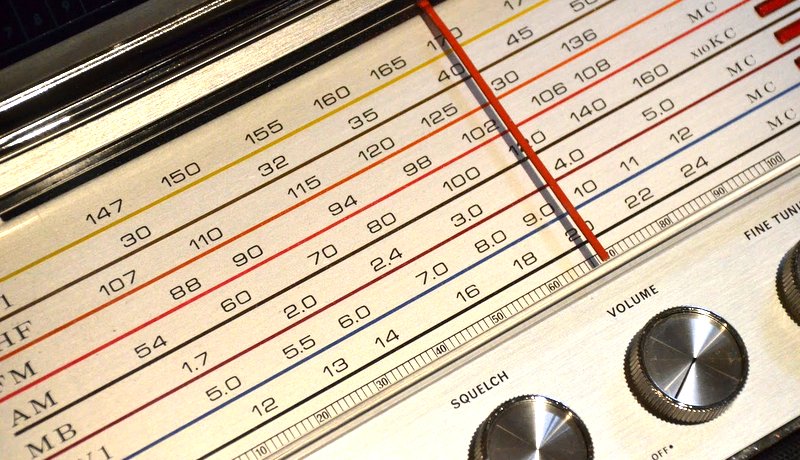Many thanks to SWLing Post reader, Alfred, who writes:
I purchased a Realistic DX150 radio when it was first introduced. I used it for many years and then stored it away for some time. A few years ago I decided to use it again. After the bandspread control was repaired at a local radio shop, I used it for a short time and then stored it away.
Yesterday, I took it off the shelf to see what was on the air waves. I did not have much success in getting any broadcasts to tune in strongly/clearly. I am writing to ask what my expectations should be – given the low performance of the radio and the state of shortwave transmissions these days. The mechanical aspect of the bandspread control needs attention again. My question is: Should I be able to pick up transmissions at some good level/ quality?
Thank you for your advice and recommendations.
Alfred, thank you for your inquiry and I hope you don’t mind that I’m sharing it here publicly because I’ve been receiving so many similar questions in the past few months.
I assume with so many people sheltering at home because of Covid-19 and, suddenly, having time available to catch up on projects and pastimes, they’re pulling solid-state receivers off of the shelf and putting them on the air again!
You asked: “Should I be able to pick up transmissions at some good level/ quality?”
A simple question, with a potentially complicated answer!
A simple answer first…
If your DX-150 is still electrically and mechanically functioning as it should, and you have it connected to an effective antenna, then yes, you should be able to receive transmissions!
Caveats…
As I’ve told numerous others who have resurrected solid-state gear from storage, there’s a good chance gear that’s a few decades old could have dead or leaky capacitors. Sometimes the symptom of this is a “hum” in the receiver’s audio, but bad capacitors (or “caps” as we like to call them) can also cause less obvious issues with the radio’s overall performance. If you’ve tried everything and suspect your radio needs repair, there are some great repair technicians out there. My friend Vlado is one of them, but I think he may have paused repairs during the Covid-19 pandemic.

Radios that have sat on a shelf or in a basement for years may also have built up oxidization on switch and knob contacts. Carefully applying a product like Deoxit on contacts can make a world of difference and bring your radio back to life.
In addition, if you haven’t hooked up your radio in a couple of decades, you may be surprised by the amount of radio interference and noise (RFI) our home electronics generate. A random wire or indoor antenna that worked well in the 1970s might not work at all if you have high levels of RFI where you live. RFI has the same effect on your radio as a noisy restaurant environment has on your ability to hear a friend who is speaking at a normal volume level across the table from you. RFI can deafen your receiver. There are antennas that can help mitigate RFI, and there are also techniques you can use to help mitigate it.
Depending on where you live in the world, you will find the shortwave landscape isn’t the same as it was, say, in the Cold War years. Fear not! There are still numerous broadcasters out there, so people who say shortwave is “dead” simply aren’t listening. Check out ShortwaveSchedules.com and Prime Time Shortwave for what’s out there and where to find broadcasters on the bands. If you like music, I highly recommend Alan Roe’s guide to music on shortwave.
If you find that you’re not hearing anything on your DX-150 (or other vintage radio)–even after following some of the advice above, yet you still want to explore the shortwaves–you might consider investing in a modern portable radio. Not only do modern portables sport a digital frequency display (which helps locate stations), but they allow you to take your listening to the field. You will be surprised what you can receive when you walk or drive to an area far away from man-made electronic noises. Tabletop radios like the DX-150 are not terribly portable. If you’re looking for some portable shortwave radio suggestions, check out this post. (Incidentally, if you found this post because you’re mainly seeking an AM/FM radio for local news and info, check out this post.)
Getting back on the air…
Alfred (and others who have recently contacted me) I hope this post gives you some helpful guidance. In truth, there are still many other issues that could affect your ability to get the most out of your vintage solid-state receiver. Let’s assume, though, that the solution is simple! Give it a go, and take your time tuning across the bands on different days and with your receiver in different locations.
My hope is that SWLing Post readers will also comment on this post with other suggestions to help you back into the world of SWLing!
Do you enjoy the SWLing Post?
Please consider supporting us via Patreon or our Coffee Fund!
Your support makes articles like this one possible. Thank you!





I still ‘dust off’ my DX-150A from time to time. The only REAL issue is the poor frequency resolution but my band spread charts and a marker generator manage to let me find stuff (remember those tools?) and I am forever impressed at how QUIET the radio is without a digital display or frequency synthesizer making noise!
It’s a great little receiver if you can get past the single conversion images. It still sounds wonderful especially with stations like 9420 Greece, 5085 WTWW, etc.!
I think that Thomas and the other commenters coveredy pretty much all the bases, so I’d just try adding a bit of informations to what they already wrote and also asking some more details
First of all, what kind of antenna are you using with the receiver ? See, the internal ferrite rod will work to a level, but adding a better antenna, even some length of wire strung outside or hanging near the ceiling would help improving signals pick up, and don’t forget to give it a good ground connection too, a short piece of wire going to a metallic water pipe or if possible to a metal rod planted in ground in your garden/yard will do; willing to setup a better antenna, you may try a doublet, in this case, pick some lenght of twisted pair cable to reach your garden/yard/balcony, connect two same lenght pieces of insluated wire (the longer the better) to the twisted pair leads and hung the resulting “T” as up as possible (e.g. between home and a tree or at the two sides of the balcony), now connect the two leads at the other end of the twisted pair to the antenna/gnd screws at the back of the DX-150 and you’ll have your antenna
Next, you wrote “I did not have much success in getting any broadcasts to tune in strongly/clearly” now, does it mean that, at least, you got some signals, even if faint or that the receiver was totally “mute” ?
The above being said, given that your receiver has been inactive for years, it may be possible that some caps need replacement and that some solderings need freshening, and by the way it may also need some de-oxidization and cleaning; not that those are difficult tasks, but in such a case you’ll need a soldering iron, a multimeter, some contact cleaning spray and then the skills to use them; if you are ok with that, have a look at those two videos which deal with restoring a DX-150 and solving some “age issues”
https://www.youtube.com/watch?v=uO_4V050QXI
https://www.youtube.com/watch?v=qqz-pmRlDs8
also, you will find it useful to have the receiver schematic at hand, here it is
http://www.whiteriverprep.com/RS_DX-150schem.jpg
and, for further informations about the receiver, you may also have a look at this quite long discussion on the “Antique Radio Forum”, don’t be sidetracked by the fact that the discussion starts with the DX-160, in the follow up, they cover the 150 as well
https://www.antiqueradios.com/forums/viewtopic.php?f=4&t=57958
what else… well, if you don’t feel comfortable with opening and repairing the receiver, I believe that Thomas’ friend Vlado could be the one to contact to restore your DX-150, not sure if, given the current covid-19 sheltering he’s accepting repairs, but you may contact him and ask
Best and stay safe !
Namaskar & hello from India.
This is my first time to write on your SWLing post.
I was avid SWL during my school days & having a good many radios receivers in my shack. Some radios date 1940s & some are working & some are beyond repairs. But your article now telling me to clean all & call someone good in the repairs — I am very thankful you for tingling the sense of SWL DXING in the deep in the memories!!!!
I am sure if the OM (Old Men) in this hobby of DXing brings their old radios from their storerooms & clean & fix them, the young generation can experience the past golden days of listening to the worldwide radio broadcasting today.
Good listening on the shortwaves. Regards & 73.
DATTA DEOGAONKAR
VU2DSI. India.
[email protected].
Thank you so much for your first comment! Wishing you good DX! 🙂
Where is Alfred? What time (his local, and the GMT/UTC times)
Better reception at local night, higher and longer antenna.
And as mentioned above, better solar conditions.
Try this for some frequency listings.
http://hamuniverse.com/shortwavebands.html
Most libraries subscribe to the WRTH (World radio TV Handbook), see local online catalogues.
And do you know f https://klingenfuss.org ?
Mine suffered from capacitor leakage and dry joints, common issues that are easily corrected, work safely though, remove the mains connection unless you are experienced in electronic fault and repair.
Also, being at the bottom of the sunspot cycle isn’t conducive to DX reception. Every afternoon I’m in the shack and tune into the BBC at 11.810, sometimes good reception, the last 3-5 days it’s been pretty poor. I’ve always wanted a DX-150, someday I’ll find one. Below is an excellent like that can help you identify the stations you are tuning in. Good luck listening.
https://shortwaveschedule.com/index.php
I don’t think Primetime has been updated for some time now?
i agree…whats with those guys?
My similar DX-160 came out of storage suffering from some age-related bad solder connections and as with many things these days, the easy solution was found on YouTube:
https://www.youtube.com/watch?v=uO_4V050QXI&list=PLV9xLyfPeQ4NeP7ZK1per_Q82m2d8U9EN&index=2&t=0s
After an easy fix, and some DeOxit 5 applied to its switches and pots, it functions like new.
I had one of them back in the 1970’s in Australia!
If you get it going, don’t forget to listen to 40 mtrs (7Mhz) and 80 mtrs (3.5 Mhz) with the BFO on, as there are likely to be al least some local hams chatting !